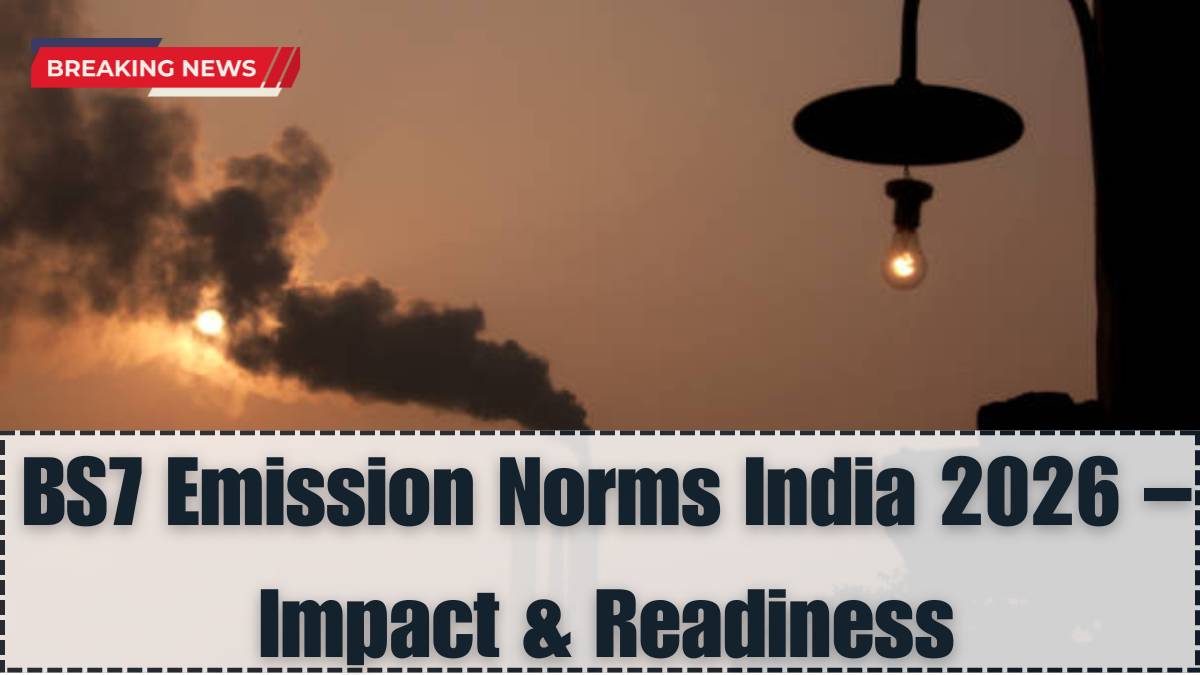India is gearing up to implement the stringent BS7 norms 2026, a major leap in its emission control roadmap. As the country continues its shift towards cleaner mobility, the Bharat Stage 7 (BS7) norms are set to align India’s emission standards closer to the global Euro 7 regulations. These new rules will impact every internal combustion engine (ICE) vehicle sold in the country—from two-wheelers to heavy-duty commercial trucks.
With the BS7 engine India initiative, automakers will be required to make significant changes to engine technology, fuel systems, and emission control components, marking one of the biggest transitions since BS6 was introduced in 2020.

What Are BS7 Norms?
BS7 norms 2026 are designed to further reduce harmful pollutants emitted by vehicles. These include:
-
Lower NOx (Nitrogen Oxide) levels
-
Reduced particulate matter (PM)
-
Real Driving Emissions (RDE) testing to simulate real-world performance
-
Tighter limits on hydrocarbons and carbon monoxide
-
Durability requirements for emission control devices over longer distances
These updates will require the integration of advanced emission technologies like Selective Catalytic Reduction (SCR), Diesel Particulate Filters (DPFs), and improved onboard diagnostic systems (OBD).
How Automakers Are Preparing
Major automobile manufacturers in India are already testing and developing next-gen engines compliant with BS7 engine India norms. This preparation includes:
-
Extensive R&D investments to re-engineer petrol and diesel engines
-
Introduction of mild hybrid and strong hybrid systems to reduce overall load
-
Deployment of advanced fuel injection technologies
-
Collaboration with global suppliers for emission components and after-treatment systems
Many automakers are expected to shift more of their portfolio to EVs and hybrids as they balance costs and compliance.
Impact on Vehicle Prices and Market
The introduction of BS7 norms 2026 is expected to drive up the cost of ICE vehicles due to expensive hardware and R&D expenses. Here’s how different segments might be affected:
| Vehicle Type | Expected Price Increase | Compliance Strategy |
|---|---|---|
| Two-wheelers | ₹3,000–₹10,000 | Fuel mapping, OBD improvements |
| Passenger Cars | ₹15,000–₹50,000 | Turbo upgrades, SCR, DPF |
| Commercial Vehicles | ₹60,000+ | Complete after-treatment systems |
While this may lead to a short-term dip in ICE sales, it will encourage a stronger shift toward BS7 engine India compliant hybrids and electric vehicles.
Government’s Role and Timeline
The Indian government has set a tentative target to roll out BS7 norms 2026 by April 1, 2026. Key regulatory bodies involved include:
-
Ministry of Road Transport and Highways (MoRTH)
-
Central Pollution Control Board (CPCB)
-
Automotive Research Association of India (ARAI)
In addition, the government is also expected to announce fiscal incentives for R&D, and possibly a scrappage incentive to push older vehicles off the road.
FAQs
What is BS7 emission norm?
BS7 is India’s next emission standard aiming to further reduce vehicular pollution by enforcing stricter limits on NOx, particulate matter, and real-world driving emissions.
When will BS7 norms be implemented in India?
BS7 norms are scheduled to take effect from April 1, 2026, as part of India’s clean air and mobility goals.
Will BS7 make cars more expensive?
Yes, implementing BS7 will increase production costs due to advanced emission equipment, which may lead to a rise in vehicle prices.
How will BS7 norms affect two-wheelers?
Two-wheelers will need upgrades in fuel injection systems, OBD units, and tuning to comply with the stricter emission limits.
Are electric vehicles affected by BS7 norms?
No, electric vehicles produce zero tailpipe emissions and are not subject to BS7 regulations. This may encourage more EV adoption.
Click here to know more.